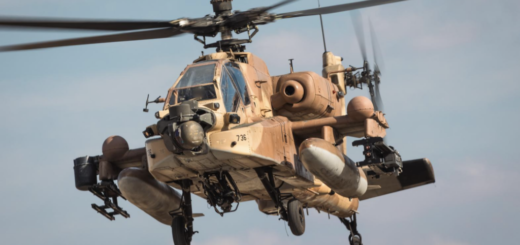US State Department Approves $4.7B NASAMS Sale for Egypt’s Air-Defense Upgrade

US State Department Approves $4.7B NASAMS Sale for Egypt’s Air-Defense Upgrade
Published:
July 24, 2025
/
Updated:
July 24, 2025
Middle East
Julien Mercier
Courtesy photo by Royal Norwegian Navy
The U.S. State Department approved a $4.67 billion NASAMS sale to Egypt on July 24, 2025. The Defense Security Cooperation Agency sent the notice to Congress that day. The package cover radars, missiles, launchers, support gear, training, and sustainment. It stands among the largest air-defense requests Egypt has made to the U.S.
Details of the NASAMS package
The deal calls for four AN/MPQ-64F1 Sentinel radars. It includes 100 AIM-120C-8 AMRAAMs and 100 extended-range AMRAAM-ERs. It also provide 600 AIM-9X Block II Sidewinder missiles plus 150 captive-air training rounds. Defense officials confirm the sale covers:
Fire-distribution centers and electro-optical tracking sensors
Tactical Control Center consoles with secure data links
Identification-Friend-or-Foe kits and anti-spoof GPS sets
Encrypted radios, cryptographic modules, and software licenses
The package also includes depot-level maintenance support, with spare parts provided for launch rails, radar components, and missile canisters. RTX, based in Andover, Massachusetts, is designated as the prime contractor. According to the notice, no offset agreement are planned. Egypt will accommodate 34 contractor technicians, while the United States will deploy 26 government personal to support system fielding and training.
Impact of NASAMS sale on Egypt’s layered air-defense strategy
Egypt still uses older Soviet-era SA-2 and SA-3 systems, along with U.S.-made Hawk batteries. It also has a small number of S-300VM launchers. While these systems can cover large areas, they are ineffective against low-flying cruise missiles or small drones. NASAMS adds a more modern, connected layer-it links radars and launchers through secure data links, letting them move quickly and share target info in real time.
Training will begin at the U.S. Army’s Fires Center of Excellence in Fort Sill, Oklahoma. After that, Egypt’s Air Defense Forces will run additional training back home. The program will cover setup, communications, and missile handling, all using English-language material. The goal is to have the system ready to go by early 2029. Support will follow a performance-based logistic model, with RTX committing to deliver key spare parts within 96 hours of a request.
Egypt utilizes about $1.3 billion in annual Foreign Military Financing for such deal. Past programs for M1 tanks and Apache helicopters used most of each year’s fund. According to industry sources, Egypt will blend FMF with it’s own budget reserves held at the Central Bank. Congress has until August 23, 2025, to block the sale under a 30-day review period.
In April 2025, Egypt and China carried out their first joint air drills at Kom Aushim airbase, using China’s J-10C fighter jets and Y-20 refueling planes. Analysts seen it as a sign that Beijing is expanding it’s influence in North Africa. Still, the NASAMS deal show the U.S. is clearly holding on as Egypt’s main defense partner.
Israel tracks developments in Egypt’s air-defense closely. A senior Israeli officer, speaking on condition of anonymity, called the NASAMS package “predictable” and “non-destabilizing.” Israel relies on its own multi-tier shield that includes Arrow, David’s Sling, and Iron Dome batteries. The officer noted Egypt’s buy does not alter the balance in the eastern Mediterranean.
Congressional review and Middle East air-defense dynamics
The DSCA notice highlights U.S. policy goals. It says the sale will support U.S. foreign policy and national security by boosting a major non-NATO ally. The notice adds the system will help Egypt counter various air threats. This includes fixed and rotary-wing aircraft, uncrewed aerial systems, and cruise missiles.
Congressional aides note the absence of range or seeker restrictions on the missiles. Past Egyptian orders included limitations on seeker modes or maximum range. Lifting those limits shows U.S. confidence in Egypt’s export-control record. Lawmakers on Capitol Hill rarely use the review period to block deals outright. The last serious challenge occurred in 2019 over tank agreements but failed to gain traction.
Regional powers may view the sale differently. Gulf states already operate NASAMS batteries in layers with Patriot and THAAD systems. Turkey fields a version under co-production terms. U.S. partners in the Middle East use NASAMS data links to feed a shared Integrated Air and Missile Defense network. Egypt’s inclusion could enable future data sharing, though no formal link has been announced.
Our analysis shows Egypt’s move strengthens its air-defense posture and deepens its U.S. ties. It also positions Egypt to update or integrate future sensors and weapons that use the same network protocols.
The post US State Department Approves $4.7B NASAMS Sale for Egypt’s Air-Defense Upgrade appeared first on defense-aerospace.
The U.S. State Department approved a $4.67 billion NASAMS sale to Egypt on July 24, 2025. The Defense Security Cooperation Agency sent the notice to Congress that day. The package cover radars, missiles, launchers, support gear, training, and sustainment. It stands among the largest air-defense requests Egypt has made to the U.S.
The post US State Department Approves $4.7B NASAMS Sale for Egypt’s Air-Defense Upgrade appeared first on defense-aerospace.





